Report

Explore Bain’s latest Customer Loyalty in Banking insights.
Dazed and confused
It could be a game show bonus question: Who is more likely to call his bank contact center, a plugged-in millennial in Brooklyn or a retiree fresh off the tennis court at The Villages in Florida?
Surprisingly, that young, bearded, plaid-shirted hipster is placing calls to his bank at 1.7 times the rate of our 70-something slice-meister. Millennials may be fluent in Siri, but they are still on the learning curve for paying bills, depositing checks, transferring money and generally resolving issues with their accounts. They also visit the bank branch fairly frequently—and not for free coffee.
Can this really be happening in 2016? After all, retail banks have been trying to automate consumer transactions since the introduction of the ATM in 1967. Their motive is obvious: Each mobile interaction incurs a variable cost of about 10 cents, vs. $4 for a teller or call-agent interaction. And mobile has half the likelihood of annoying a customer. Yet despite the increasing power and presence of mobile devices, US banks have a long way to go to realize the promise of digital self-service. For example, nearly 90% of the 5,300 US banking consumers recently surveyed by Bain & Company visited a teller during the previous quarter, and nearly half called their bank.
When we analyzed the survey data to explore why this behavior persists, we found some surprising dynamics. Younger customers, while frequent mobile users, report that they find digital channels confusing or inadequate for their banking, and often need help. Among the heaviest teller users, for instance, 42% of the younger ones tried using another channel before visiting the branch.
Moreover, respondents age 18–24 make twice the number of banking interactions on average as respondents 65 and older. (The charts featured in this report sort respondents into three age categories—18–34, 35–54, and 55 and older—but our analysis included narrower age categories as well.) The large volumes from younger customers flow through numerous channels, raising costs for the bank and frustration for the customers.
As if dealing with that flood of calls and teller visits weren’t challenging enough for banks, consider another overlooked opportunity: migrating older customers from the branch to mobile.
Older customers are more likely than younger ones to visit their tellers—92% of respondents over 65 made at least one teller visit in the previous quarter vs. 84% of the youngest group. Seniors have not even fully embraced ATMs, with just 61% using the machines, compared with 87% of the youngest respondents. Seniors also are far less likely to use banking mobile apps or websites, with only 31% trying those digital channels, compared with 82% of millennials.
 |
Ripe for mobile conversion
What causes such demographic disparities? One convenient narrative, that seniors resist new technology, does not appear to apply. When older customers do use a bank mobile app, they generally like the experience, giving it a slightly higher Net Promoter Score® (a key metric of customer loyalty) than younger customers do. And older users have more banking interactions online through their computers than younger customers.
Senior customers thus appear to be ripe for mobile conversion. They’re willing to learn new technology if banks provide them with the right help and support to do so. After all, consider how many seniors patronize Apple’s in-store Genius Bar.
To overcome the barriers, survey evidence suggests that banks should look within to their unconscious ageism. Only 17% of older respondents said they have received any guidance or training on how to use their bank’s mobile app, compared with 26% of young respondents. Whether some banks assume older customers are not interested, or have decided that creating an effective guidance process is too much trouble or a low priority, these banks are missing a major opportunity to shift transaction volume to lower-cost mobile channels among the people who value it the most.
Among customers of all ages, much of the volume in branches and call centers consists of routine interactions that could be avoided if customers felt better served by digital. Almost three-quarters of reported branch transactions and more than half of phone interactions deal with deposits, withdrawals, checking one’s account and other routine matters.
One glimmer of hope for banks is that a relatively small share of customers account for much of the transaction activity. The most active 7% of respondents accounted for 34% of teller visits, and the most active 4% accounted for 41% of phone calls. Dealing with these groups first would be the quickest route to generating significant results.
Two-track tactics
Consumers’ responses suggest that banks would benefit by creating different tracks for guidance and incentives to change consumer habits: Teach the young to bank and the old to self-bank. As banks reconsider their tactics, they will want to devise interventions by frontline branch and call agents that blend education and encouragement: For example, not “why don’t you use your phone?” but “would you like to see how you could save time?”
Some retail banks have been reaching out more than others to consumers. Citi, Capital One, Regions and USAA all have higher reported guidance on mobile channels than other banks. Yet digital channels often are not as effective as banks would like; customers try them, but contend with various problems and wind up visiting a teller or calling a contact center anyway. When customers fail in their attempts to transact digitally, more than one-third cite technical problems or lack of functionality. For attempts at ATMs, long lines and technical problems were major issues.
Tackling all the barriers to digital adoption might seem daunting, but an integrated program to spur behavior change among consumers can yield quick results. One major North American bank recently contacted heavy users of the phone channel for routine transactions; the bank made sure the communication came from an employee who personally knows the customer in question. Convincing these customers to try just one interaction through digital channels achieved a 70% conversion rate for future interactions. Multiplied over a year’s worth of interactions, that makes the extra time initially spent talking with the customer a remarkable return on investment.
We have found that using Agile techniques to tackle the root causes of routine branch visits and phone calls is quite effective. Typically, a team consisting of frontline employees from all the relevant functions identifies any barrier to adoption of self-service technologies, then introduces rapid tests of ways to overcome the barriers, whether through changes in policy, process, training, communications or technology.
Banks taking this approach have been able to reduce branch and call center volumes by 20% in 12 months. For a typical US bank with 1,000 branches, the savings could reach $70 million to $80 million within a year. And banks that design an easy, accessible and convenient self-service experience stand a better chance of delighting customers in the process, whether they’re web designers in Brooklyn or retired nurses in Florida.
Methodology
Bain & Company partnered with Research Now, an online global market-research organization, to survey consumers of US banks. The survey’s purpose was to gauge consumers’ preferences, motivations, perceptions and behaviors when interacting with their principal bank. Conducted in May 2016, the survey polled 5,271 consumers of national, regional, community and direct banks in the United States.
1. The demographics and use of bank channels
- The great majority of customers young and old still use tellers. ATM and phone use falls off among older segments. Young customers have the most banking interactions in total.
- Older customers are less than half as likely as the youngest group to use mobile apps or mobile browsers to do their banking. However, they are about as likely to bank online, suggesting that they will embrace mobile technology under the right circumstances.
- When older respondents do use smartphones or tablets to bank, they rate the experience highly—even higher than younger customers do. Younger users might be more critical of app quality, appearance and functionalities, as they are more knowledgeable about mobile apps in general.
- Consumers who do not use bank mobile apps report several reasons, notably habit, but also lack of knowledge and access issues. Older users are slightly more impeded by habit and security concerns. Banks can address most of these issues.
- Despite the higher scores that older users give the mobile experience, this group is least likely to have received information or guidance from a bank, or to even have been made aware of mobile features. Active guidance on mobile represents a huge untapped opportunity for banks.
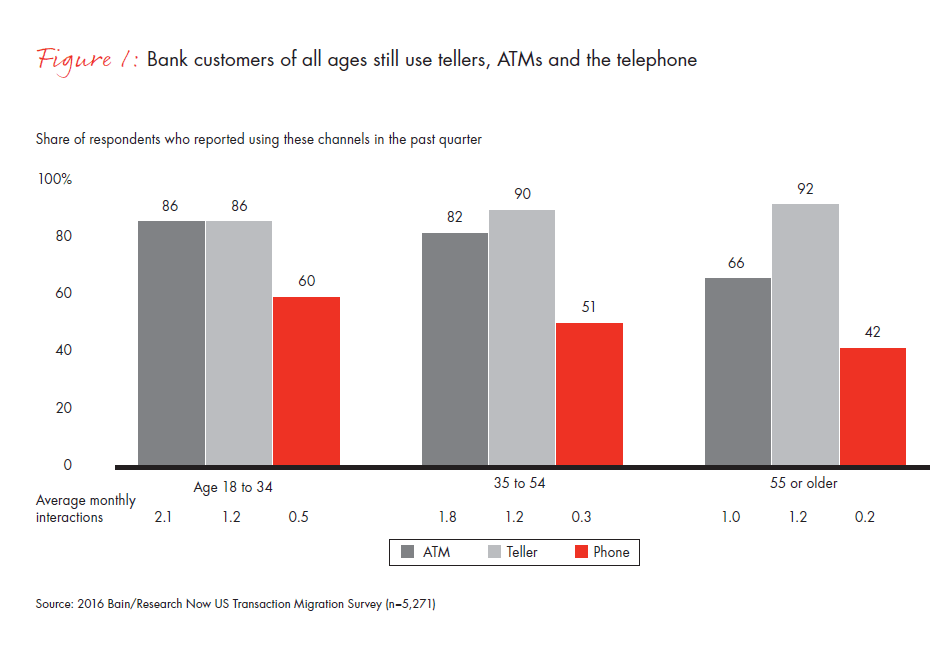
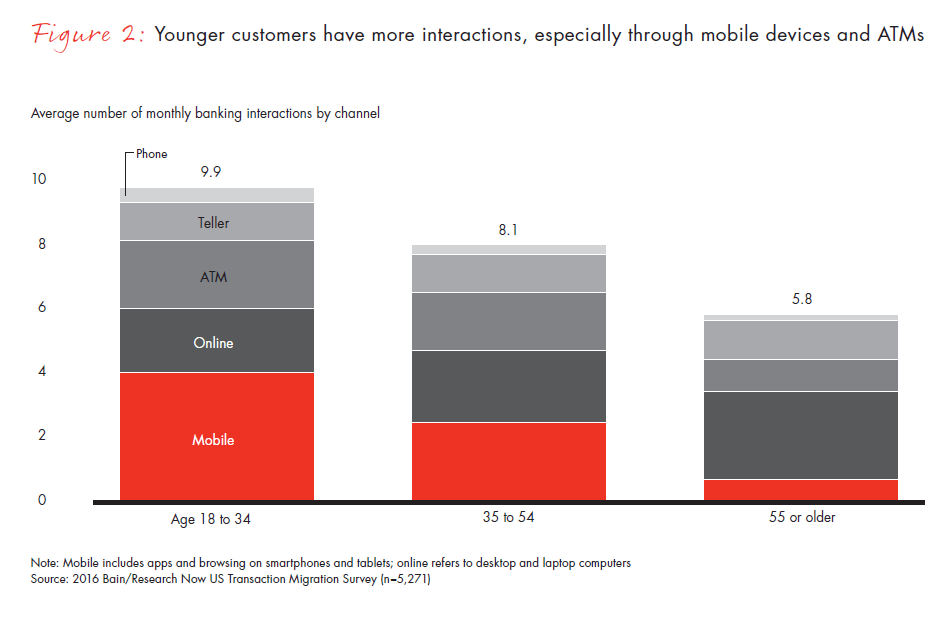
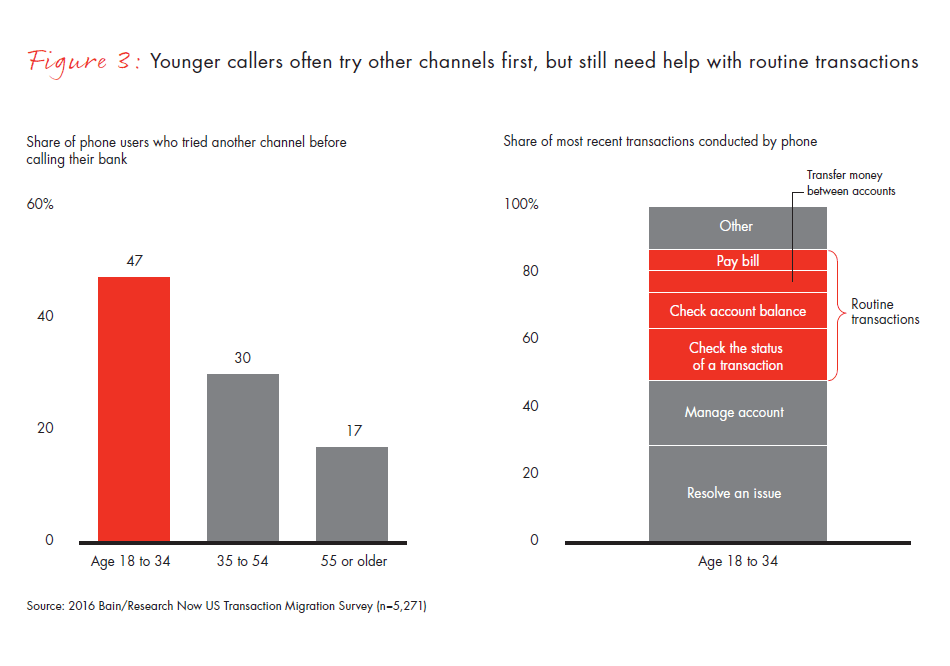
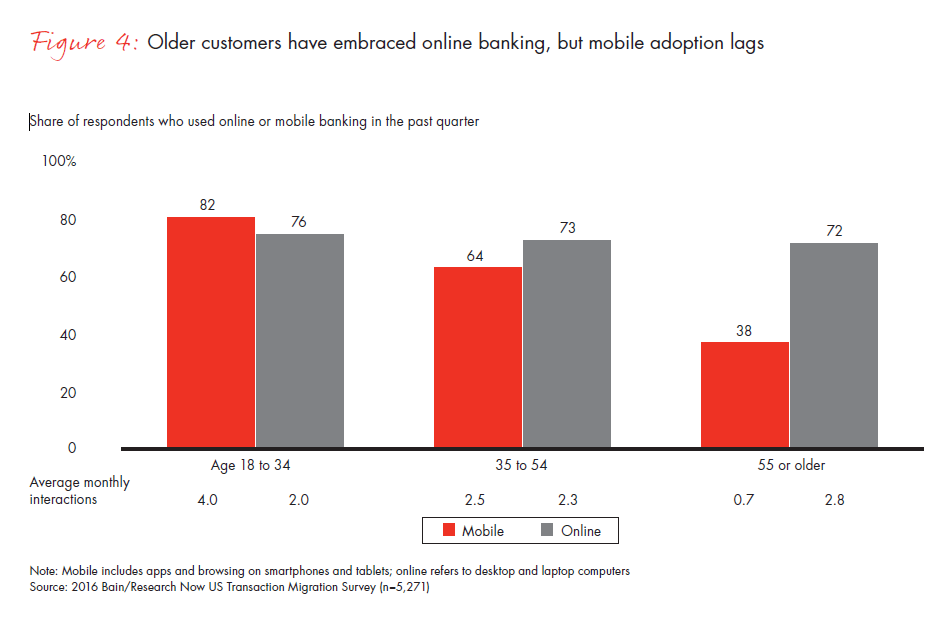
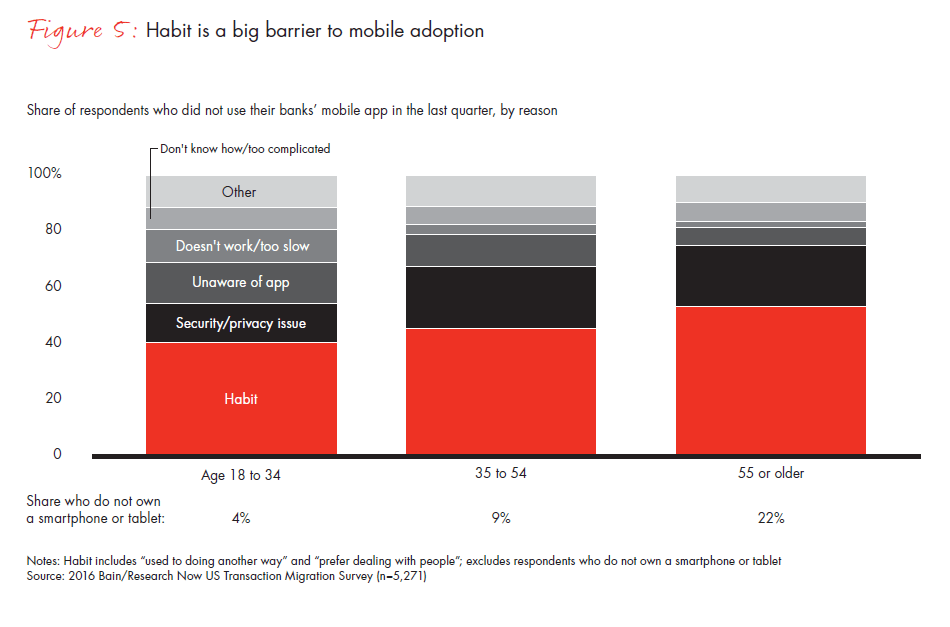
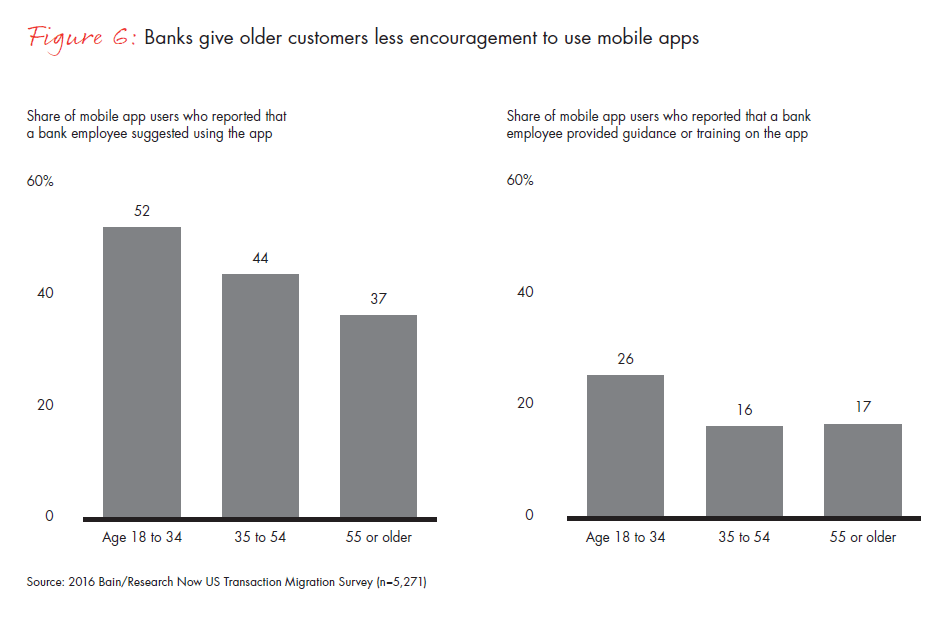
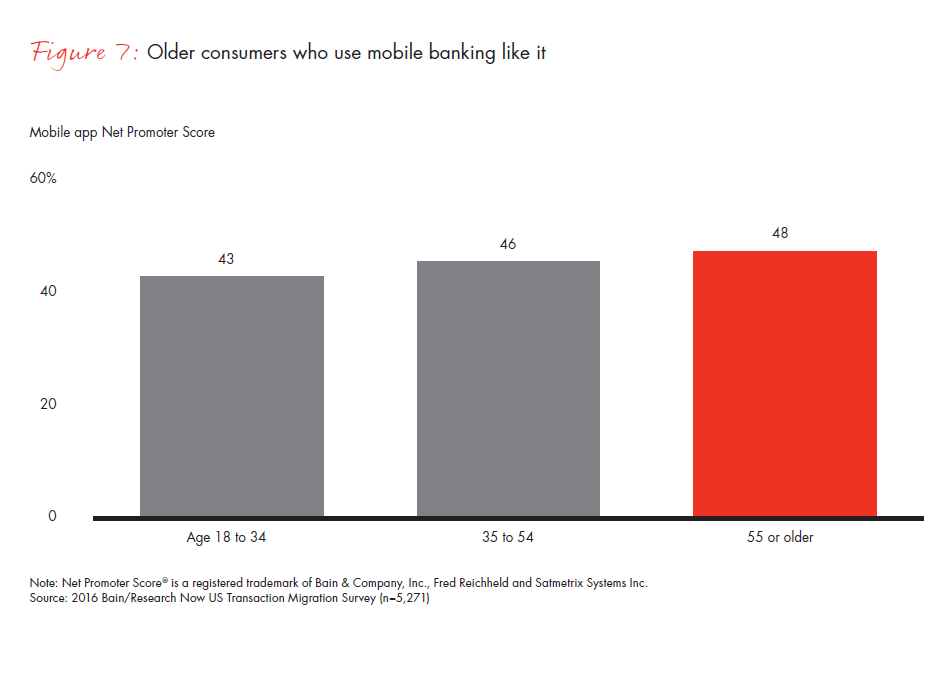
2. What heavy service users are trying to accomplish
- Transaction volume in both branches and contact centers tends to be driven largely by a small group of frequent users—defined as four or more teller interactions and three or more phone interactions per month. Just 7% of respondents accounted for 34% of teller interactions, and 4% of respondents accounted for 41% of phone interactions.
- The composition of heavy users may surprise bankers. For example, heavy users of traditional channels such as tellers do not skew older, but rather about the same age as light users. And heavy phone users actually skew younger.
- Many frequent teller users, especially younger users, did try other channels first. But more than one-third were deterred by technical problems, lack of functionality or, at ATMs, long lines.
- Heavy phone use tends to involve routine transactions, and rarely resolution of problems. With ATMs, the problems are more diverse, ranging from concern about hidden fees to lack of a debit card. Many heavy phone users also tried other channels first.
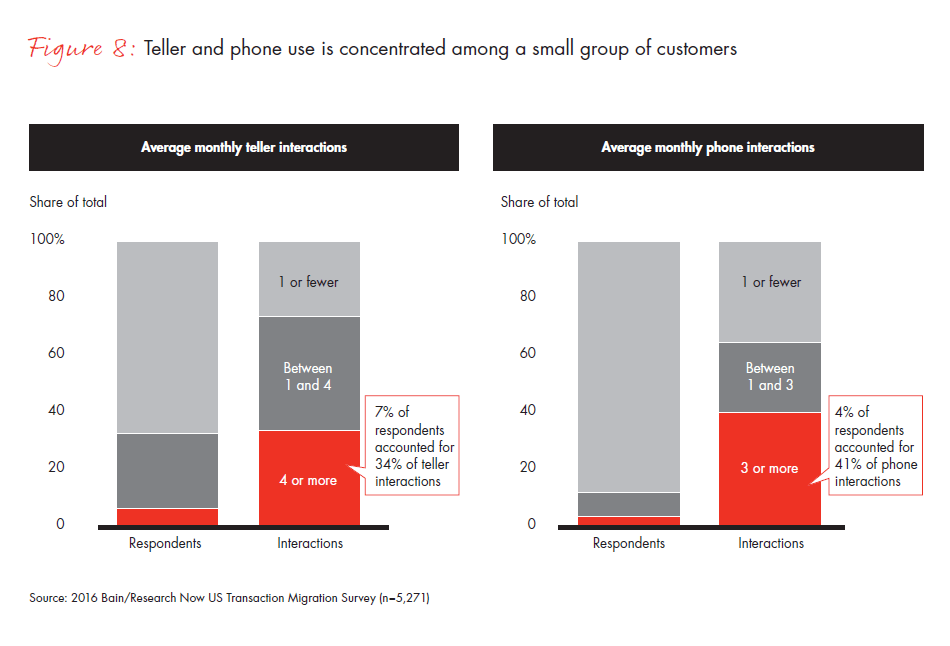
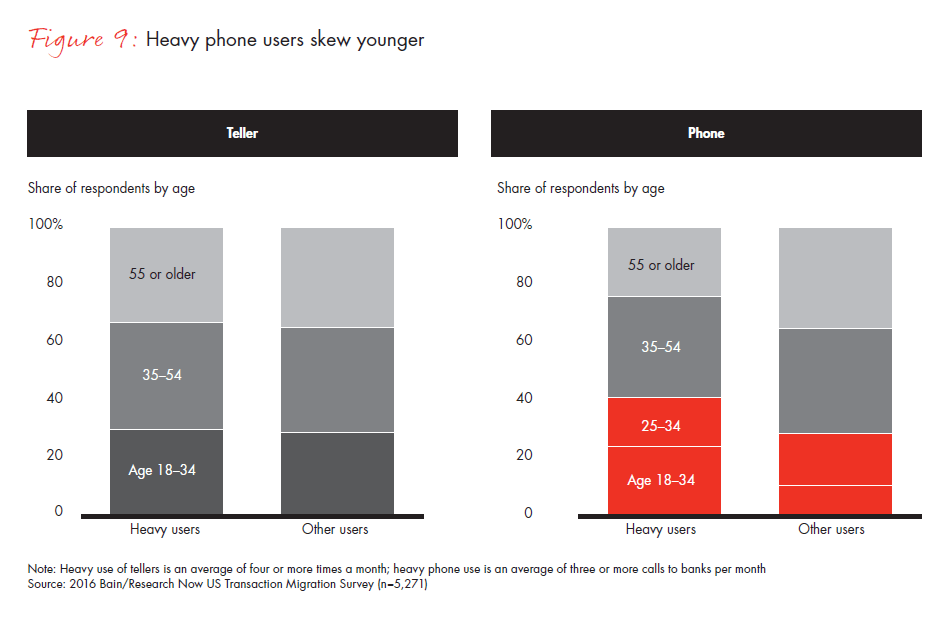
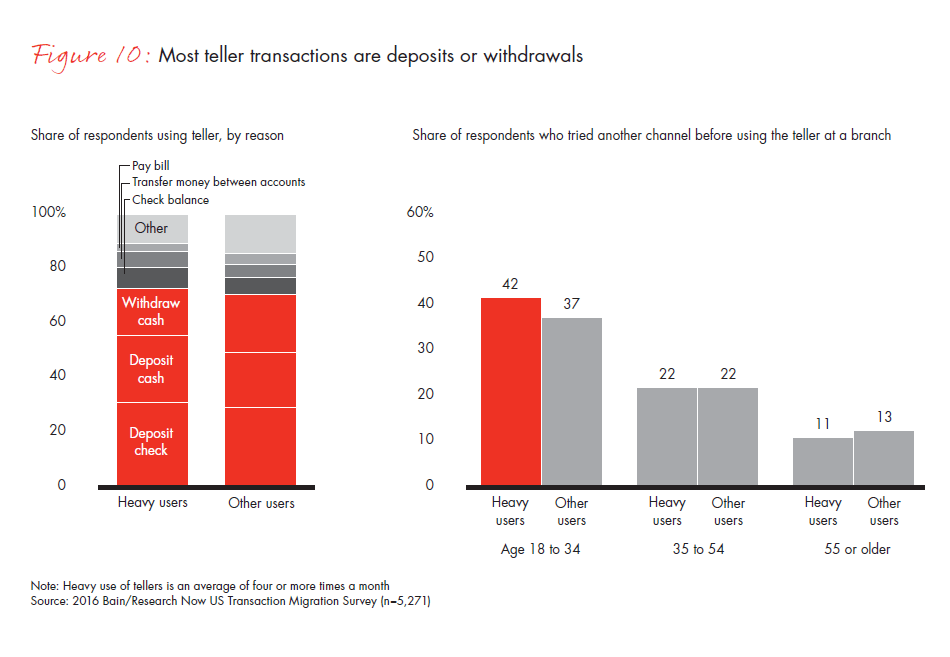
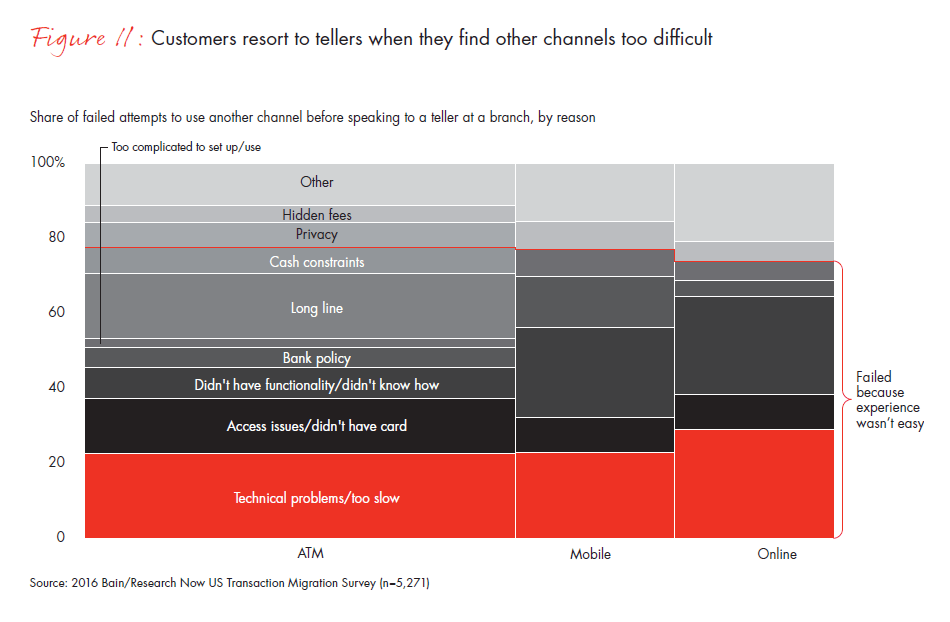
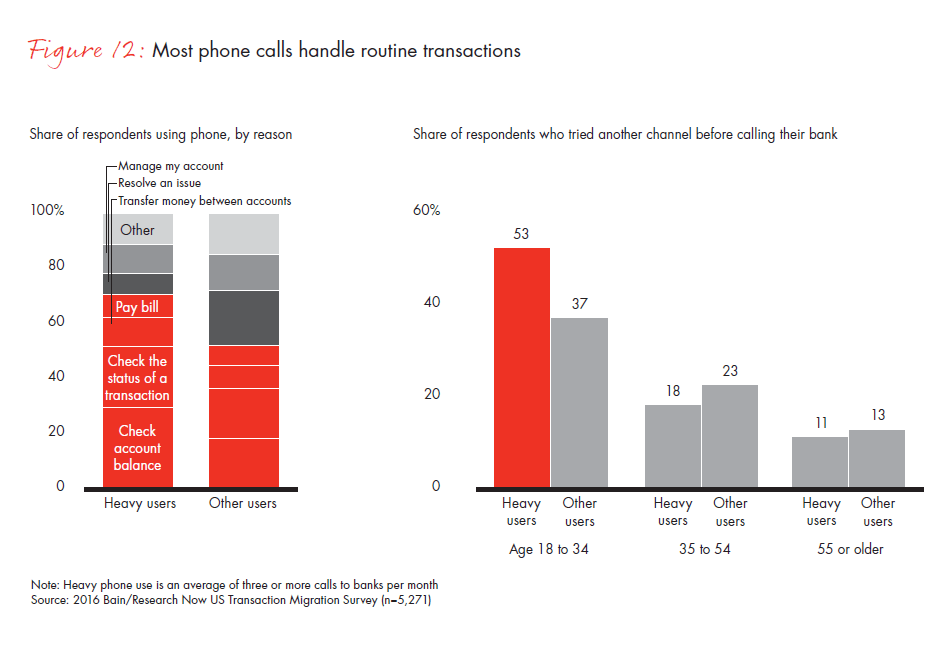
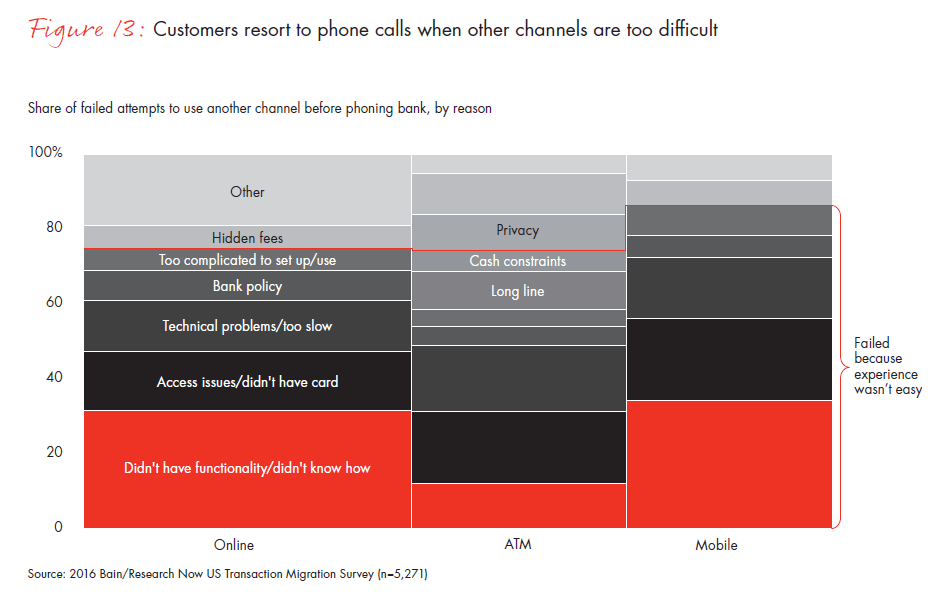
This report was prepared by Maureen Burns, Gerard du Toit and Mark Schofield, partners in Bain’s Financial Services practice, and Christy de Gooyer, practice area director. The authors thank Thiago Lamelo, Cameron Murphy and Anna Podolsky, who contributed to the development of this report, and John Campbell for his editorial support.
Net Promoter Score® is a registered trademark of Bain & Company, Inc., Fred Reichheld and Satmetrix Systems, Inc.












